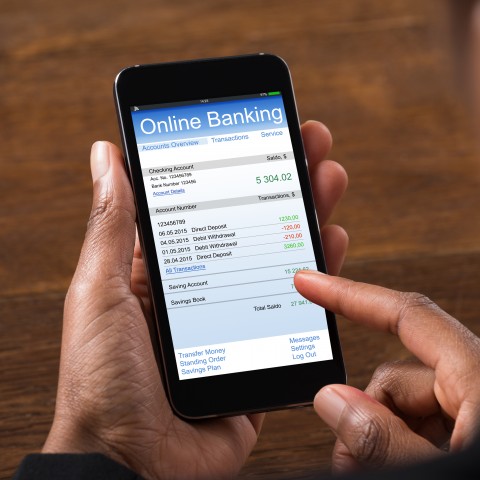Learning the numbers in Portuguese solves many problems. You can ask for caipirinhas (a Brazilian cocktail) for you and your buddies. Or count the goals in a soccer match. Or know how much a ticket from Sao Paulo to Rio will cost… You can also negotiate your salary, answer how many months (or years) you plan to stay in the country, and tell people your age.
Like in any other language, it’s important that you learn at least the numbers to ten in Portuguese right at the start. That will solve some communication problems when you’re speaking to a Brazilian or Portuguese person who doesn’t speak English.
Exciting, isn’t it? When do we begin? Well, sit down, take it easy, breathe—count to ten.
-
→ Want to review numbers vocabulary in Portuguese before reading this article? PortuguesePod101 has you covered!
Table of Contents
- Portuguese Numbers 1-10
- Portuguese Numbers 10-20
- Portuguese Numbers 10-100
- Numbers Up to 1000
- How to Give Your Phone Number
- How to Use Numbers When Shopping
- Saying Prices
- Learn Numbers in Portuguese and Much More with PortuguesePod101
1. Portuguese Numbers 1-10
First of all, we’ll go over the basic numbers that even kids know how to count. Baby steps before bigger plans. You’ll have to lay these bricks in order to reach bigger numerical structures.
Numbers in Portuguese are called números. If you’re familiar with any of the other Romance languages, this word may sound familiar to you. And so should this list of numbers in Portuguese from one to ten:
- 1 Um
- 2 Dois
- 3 Três
- 4 Quatro
- 5 Cinco
- 6 Seis
- 7 Sete
- 8 Oito
- 9 Nove
- 10 Dez
An interesting thing to note is that the number one in Portuguese transcends its function as a number for English speakers. Um is also used as an indefinite article in Portuguese, playing the role of “a(n)” in English.
So, when um acts as an indefinite article, it can be declined to its feminine form, based on the noun it’s referring to. Uma is the preferred form for counting feminine nouns. For instance:
- Ele colheu uma banana da bananeira.
“He picked a banana from the banana tree.” - Olho para a cesta e vejo: uma, duas, três maçãs…
“I look at the basket and see: one, two, three apples…” - Rolamos sobre um monte de folhas.
“We roll over a pile of leaves.”
The other number that can decline to its feminine form is dois (which is duas in its feminine form). However, it isn’t used as an indefinite article.
Oh! And since we’ve started from the basics, let’s not forget the smallest of all integers—zero. Well…you can call it zero. The only significant detail with this one is the pronunciation: the “e” sounds like it does in the word “bell.”
Baby steps – We’ll get to the big ones soon.
2. Portuguese Numbers 10-20
Now that we’ve covered the very basics, giving you a strong foundation, we’re going to go through a rocky path of numbers that may sound pretty irregular to foreign speakers—but at least there aren’t many of them.
The thing is, they kind of make logical sense to foreigners, but not all of them.
From ten to twenty, half of the numbers in Portuguese sound irregular and the other half remind learners of the “-teen” numbers:
- 10 Dez
- 11 Onze
- 12 Doze
- 13 Treze
- 14 Catorze or Quatorze
- 15 Quinze
- 16 Dezesseis
- 17 Dezessete
- 18 Dezoito
- 19 Dezenove
- 20 Vinte
Actually, you may see that 11 (onze), 12 (doze), 13 (treze), and 14 (quatorze) are a combination of the first four integers with dez (10). It may seem a little off the first time you hear them, but don’t let the “e” at the end of these numbers (or the different spelling) confuse you!
3. Portuguese Numbers 10-100
Now, what about the large numbers in Portuguese? How do they work?
Portuguese is really logical sometimes (only sometimes), and luckily for you, that includes numbers. Once you’ve memorized 0-19, it gets simpler from 20 on.
Starting with 20 (vinte), all you have to do is “add” the numbers by placing “and” between the parts of the sum.
So, 21 is vinte e um (“twenty and one”), 22 is vinte e dois (“twenty and two”), and so on.
The logic behind the units is easier to get. To put this knowledge into practice, you can start by counting in Portuguese using the sets of tens:
- 30 Trinta
- 40 Quarenta
- 50 Cinquenta
- 60 Sessenta
- 70 Setenta
- 80 Oitenta
- 90 Noventa
- 100 Cem
These work just like vinte (20). For instance, 34 is trinta e quatro and 79 is setenta e nove.
When you get over 100, you just have to add more numbers the same way. For example: cento e cinquenta e seis is 156.
It’s just a matter of adding numbers up with figures above twenty.
4. Numbers Up to 1000
By now, counting numbers in Portuguese is probably as easy as eating breakfast for you. But we’re headed to the top! It’s time to cover numbers above 100 in Portuguese.
The following numbers in Brazilian Portuguese will help you keep track of your monthly expenses and read the cost of travel tickets. Once again, you can detect a pattern from hundred to hundred:
- 100 Cem
- 200 Duzentos
- 300 Trezentos
- 400 Quatrocentos
- 500 Quinhentos
- 600 Seiscentos
- 700 Setecentos
- 800 Oitocentos
- 900 Novecentos
- 1000 Mil
Banking in Portuguese: The joy of counting sets of hundreds in a foreign language.
5. How to Give Your Phone Number
Learning numbers in Portuguese is very useful. But the key to understanding a new language in its subtleties is to interact with speakers of that language and to start networking. That means getting to know people. Going out is a great way to start taking new, adventurous steps into a foreign culture and meeting interesting people.
While you’re talking with new people, there may come a time when you want to exchange phone numbers with them. To help you be prepared for that situation, here are some phrases you can use to give your number in Portuguese, or to ask someone for theirs.
- O meu número é…
“My number is…” - Qual é o seu número de telefone?
“What is your phone number?” - Me passa o seu número?
“Can you give me your number?”
As for how to say numbers in Portuguese, the numbers are usually spoken individually in Brazil. In European countries, they’re grouped into sets of tens or hundreds.
- O meu número é nove, sete, oito, seis, cinco, sete, sete, zero.
“My number is 9786-5770.”
Eventually, though, digits can also be grouped into two sets. This usually happens when there’s a zero in the combination:
- O meu número é nove, sete, oito, seis, cinco, sete, setenta.
“My number is 9786-5770.”
Sure, there are some exceptions to this “formula” of Portuguese phone numbers, but there aren’t many. One exception would be the prefix 0800 in Brazil. This prefix is used for free hotlines, and it’s called zero oitocentos (“zero-eight hundred”).
Also, there’s a deep-rooted term in Brazil that’s frequently referred to in telephone numbers. This term is meia, and it can make a Portuguese-learner feel like an alien.
Meia is a word that means both “sock” and “half” in Portuguese. What number do you think it is?
If we’re dealing with telephone numbers, which range from 0 to 9, perhaps five would be a good approximation—but it isn’t. Meia is equivalent to six.
Indeed, it’s the abbreviation of meia dúzia (“half a dozen”), which equals six. The word is linked to how people used to measure things by the dozen, especially groceries. Even today, many egg cartons still hold a dozen eggs.
Most students learn this one the hard way, so consider this a valuable lesson!
“Did you say meia?”
6. How to Use Numbers When Shopping
You may notice that when shopping in Brazil, it can be a struggle to get coins and small change from the cashier. Indeed, Brazilians don’t care much about using coins. The local coins, centavos, are represented after the comma in the price, but they aren’t taken seriously. Since the 1 centavo coin has been abolished, it’s impossible to pay exact prices that aren’t round (that don’t end with 5 or 0) with physical currency.
So, buyers and sellers often round up the price to a number ending in 0 or 5 to make it easier to get a proper real bill.
Here’s an example of a conversation you may have when shopping:
A: Boa tarde! Quanto está custando este celular novo da vitrine?
B: Este celular sai por R$850. A compra também pode ser parcelada em dez vezes de R$85.
A: “Good afternoon! How much does this new cell phone from the store display cost?”
B: “This cell phone costs R$850. We can also set the payment for ten installments of R$85.”
It’s common practice in Brazilian retail to set payment installments for a wide array of products. The payment plan can sometimes reach tens of installments, which may appear odd to many foreigners. However, these installment plans are very common, especially for electronic equipment, furniture, paying tuition, housing, cars, and loans.
A: Está um pouco caro para mim… Por quanto [dinheiro] você consegue me fazer estes dez livros?
B: O preço completo é de R$400, mas consigo fazer R$350.
A: “That’s a bit pricey… Can you lower the price for these ten books?”
B: “The full price would be R$400—I can make it R$350.”
Now let’s talk about discounts. Everybody is happy when they see that interesting items are on sale. But before you can really enjoy a sale, you have to understand its terms. If you see some indication of a 50% discount in the display window, but you’re not sure it applies to the shoes you want to buy, you can confirm the information with the seller by asking:
- Este sapato também custa metade do preço na promoção?
“Does this shoe also cost half the price on sale?”
In terms of fractions, metade (“half” ) is the only one you’ll see when shopping. Other discount amounts are usually given as a percentage.
7. Saying Prices
There’s a certain way to say numbers in Portuguese when giving prices—and it’s slightly different from how it’s done in English.
In Brazil, the values before and after the comma are joined by the word e (“and”). In Portugal, they’re joined by the word com (“with”).
“Este sapato também custa metade do preço na promoção?”
8. Learn Numbers in Portuguese and Much More with PortuguesePod101
Now you have the basic and intermediate figures, and that’s a good starting point when learning how to say numbers in Portuguese. If you decide to go even further and learn the sets of thousands, you’ll be able to negotiate payment for jobs, speak properly with your bank manager, and engage in some interesting calculations.
But what about the Portuguese numbers’ pronunciation? And other relevant cultural information you’ll need to understand the reality of Portuguese-speakers and their countries of origin?
Private lessons from a private teacher will increase your potential and let you learn more easily about numbers in Portuguese and a whole set of topics for everyday life. That’s the aim of lessons from PortuguesePod101.
The interface is simple to use and the content is planned and designed to retain your attention in a fun and constructive manner. Try and exercise your domain over numbers in Portuguese, and you’ll be on cloud nine!
Before you go, let us know in the comments how you’re doing with Portuguese numbers so far! We’ll be glad to answer any questions.
Happy Portuguese learning!

















